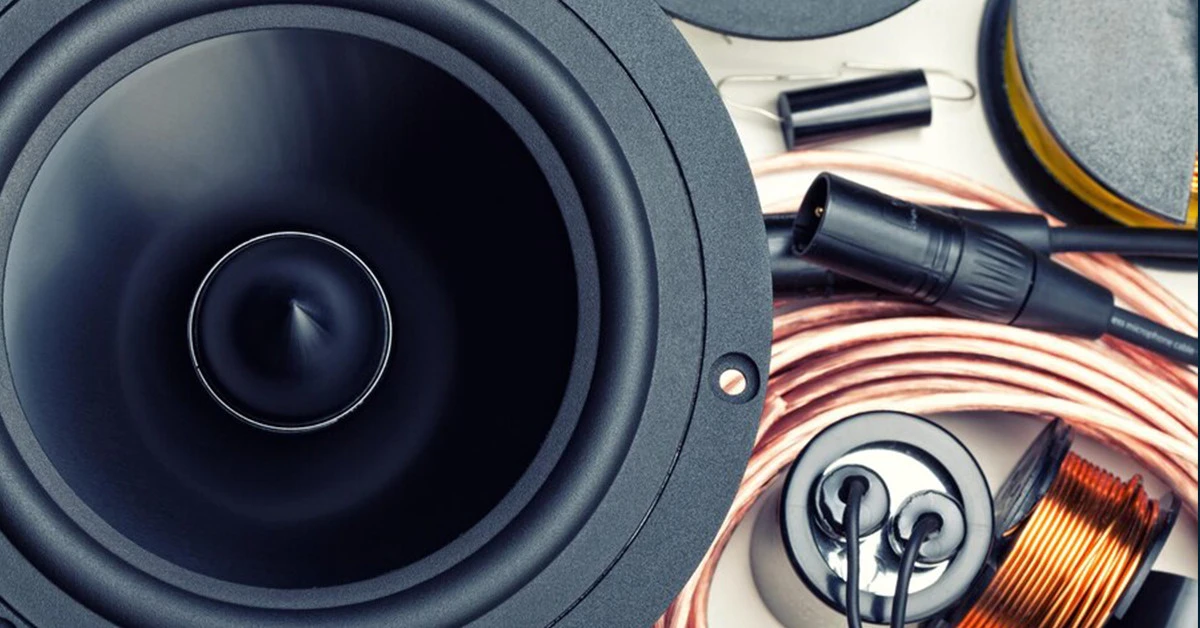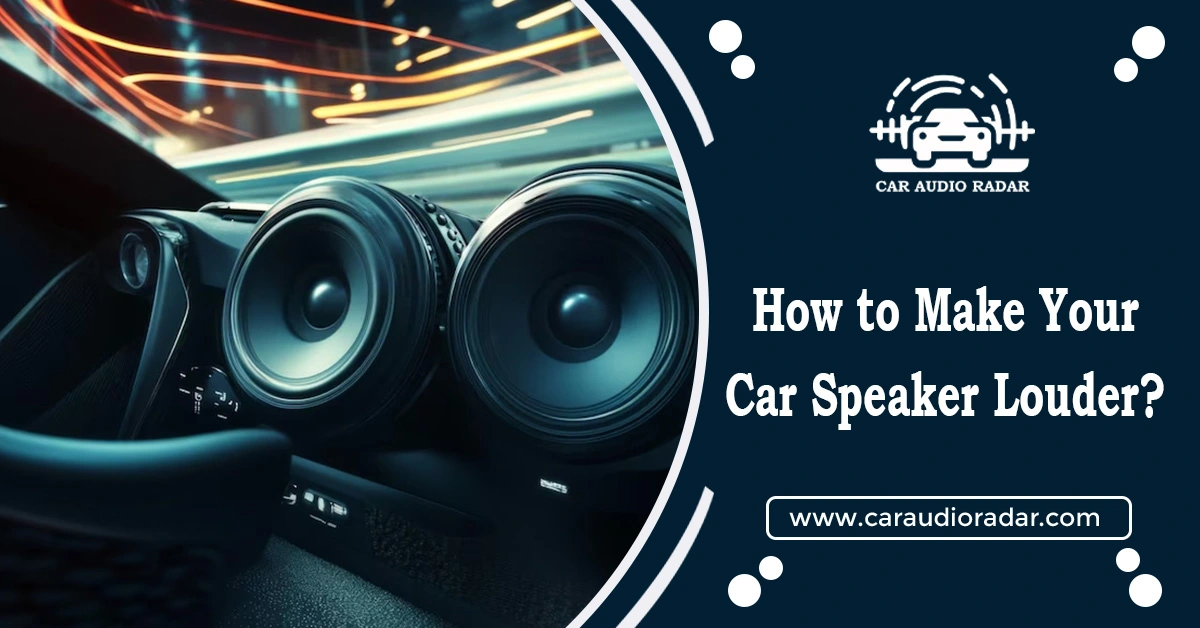
Jump to

Listening to music in your car is a great way to chill. You can listen to your favorite songs wherever you go. However, If your speaker makes strange noises, such as crackling, buzzing, or no sound, it could be a blown speaker. A broken speaker can ruin the mood and cause inconvenience because it is not working correctly. In this guide, we’ll walk you through how to fix a blown car speaker without buying new ones – we’ve got you covered with simple solutions.
Key Takeaways
- To begin with, take a look at your speakers to see if they are the primary source of the problem.
- If your speaker isn’t working correctly, you may hear strange sounds such as buzzing or hissing.
- Find the problematic speaker in your car’s audio system.
- Thermal failure is a common cause of speaker problems.
- Disconnect the battery first to prevent any electric charge.
- Ensure that everything is working correctly by testing your speaker.
- To prevent speaker damage, avoid playing music too loudly for long periods.
How to Fix A Blown Car Speaker: A Step-By-Step Guide
Let’s explore how to fix a blown speaker in car in seven simple steps:
1: Check Your Speakers
Start by checking your speakers to see if they’re the source of the problem. Sometimes, it’s obvious they’re not working correctly, such as when there’s no sound. However, detecting a blown speaker can be more complex.
Play music, preferably from a CD, to see if your speakers need repair. Avoid using the radio because static can mask any distortion. Choose a familiar song you frequently listen to to help you identify any strange sounds.
Turn up the volume if you hear strange sounds, such as rattling or shaking. If the problem gets worse, something is likely wrong with the speaker’s cone or voice coil.
2: Locate the Troublesome Speaker
Next, figure out which speaker is causing the problem. If your car has controls for each speaker, use them to identify the problem. If not, approach each speaker and listen carefully.
After you’ve done this, you’ll know which speakers need to be repaired or replaced. If it’s not the speakers, remember that other car components can make strange noises when you play music.
3: Remove The Speaker
Let’s take out the speaker. To avoid any electric charge:
- Disconnect the battery first.
- Open the speaker enclosure with a screwdriver or ratchet.
- Unplug all of the wires that connect your speaker to your vehicle.
- Take each speaker unit out and detach it from the back. Cut the wires at the speaker’s base if you’re dealing with an older model with soldered wiring.
4: Remove The Speaker's Components
Next, remove some of the speaker’s components to determine what is damaged. Before you begin, consult your car’s owner’s manual for instructions. It may include instructions for removing speaker parts specific to your model. If the manual is unavailable or unclear, you can use my instructions.
Remove the Surround
Now, using a knife, remove the speaker’s surround. Make a hole in the old foam surround with the knife. You can then tear it with your hands or use scissors.
Both methods work, but I recommend scissors for an easier and faster job. Plus, you’ll get a more precise cut with scissors.
Remove the Cone, Voice Coil, and Old Glue
Now, remove the speaker cone and voice coil with the knife. Please remove the old glue by scraping it with a knife or sandpaper. Before removing the voice coil, disconnect all the wires connecting the system to it. The first two steps are simple, but clearing the old glue may take time.
5: Clean Your Speakers
Wipe away dirt and dust from your speaker to keep it clean. All you need is a cloth and some alcohol. It is essential to be gentle to avoid any damage. Grab a cotton swab for the tiny spots to ensure your speaker is spotless.
6: Determine and Resolve the Problem
You can see what’s broken after taking everything apart. Begin by inspecting the cone of the speaker. If you find any tears or cuts, a simple repair with glue or tape could be enough. However, if the cone is severely damaged, you must replace it.
Let’s take a look at the voice coil, which is another essential component of the speaker. If it’s melted, it’s time to replace it. The voice coil is simple to replace. Replace the old one and reconnect all the wires.
Changing the speaker cone is also simple to do. Put glue on the new cone and replace the old one. Allow a few minutes for the glue to dry before proceeding.
After you’ve installed the voice coil and speaker cone, it’s time to set up the speaker’s surround. Apply glue to it before placing it and allow it to dry. After that, reconnect all of the necessary wires and replace the mounting screws on the speaker.
7: Test Your Speaker
Test your speaker to ensure everything is in working order. Begin with low-volume music and gradually increase it. If everything sounds correct, you’re good to go. If not, the speaker is too damaged to be repaired quickly. You’ll have to replace it entirely.
Signs of a Damaged Speaker
If your speaker isn’t working correctly, you may hear strange sounds such as buzzing or hissing. The voice coil can become loose at times, causing strange noises. Power surges can also harm the bass and drive the speakers to fail. You may need to purchase a new speaker or driver if this occurs.
To see if the speaker is damaged, gently touch the cone. If it doesn’t vibrate as it should, there could be a problem. A loss of sound or a specific frequency can also indicate trouble. A blown speaker can produce weak or no sound at all. Remember that speakers can go wrong in a variety of ways.
What Causes a Car Speaker to Blow?
Thermal failure is a common cause of speaker problems. This happens when a speaker receives more power than it can handle, causing it to overheat. When a speaker overheats, the glue that holds all its parts together is damaged.
Moreover, too much heat in a speaker can melt or burn the wires and the critical voice coil. The voice coil is similar to the speaker’s; if it is damaged, the sound will be weak or silent.
Another issue is mechanical failure, which occurs when the speaker’s cone becomes displaced. This usually happens when the speakers are not correctly set up. Parts of the speaker can break or loosen if the cone moves out of place. This kind of damage can cause the speaker to stop working.
Remember that increasing the volume for an extended period can severely damage the speakers. Blown speakers, however, only sometimes occur due to your actions.
Tips for Preventing a Blown Car Speaker
Knowing how to fix blown out speakers is essential, but taking precautions to avoid future damage can help your car’s audio system last longer. Here are some simple tips to protect your speakers:
- To avoid speaker damage, avoid playing music too loudly for long periods.
- To avoid overpowering, ensure your audio system is configured correctly, and your speakers are matched to your amplifier.
- Keep speakers away from direct sunlight and extreme heat.
- Inspect your speaker system regularly to ensure that everything is in working order. However, if a problem exists, there are ways to repair a blown speaker.
- In some cases, instead of purchasing a new speaker, you can replace a component.
- Use high-quality audio sources for a more natural sound, and avoid playing distorted or clipped audio.
Conclusion
So there you have it, an in-depth guide on how to fix a blown car speaker. You can repair a blown-out car speaker in your audio system with the proper knowledge and approach. You can restore your speakers to their optimal condition by understanding the common causes and signs and following the step-by-step guide.
Remember to take precautions to avoid future damage and extend your speakers’ life. If you have any problems or are unsure about the repair process, it is best to consult a professional car audio technician.
Frequently asked Questions (FAQs)
Listen for unusual noises such as buzzing or hissing, the absence of sound, or distorted audio. Check for a torn speaker cone or a loose voice coil as well. It could be a blown speaker if you notice any of these symptoms.
Keep the volume reasonable, keep speakers away from direct sunlight, use high-quality audio files, and check your speakers regularly.
Seek professional assistance if the damage is extensive, the repair appears overly complicated, or you need help determining where to begin.
If your speaker is crackling, inspect the wires for damage. Remove dust from the speaker and its components. If the problem continues, either replace the speaker yourself or seek professional help for Bluetooth speaker repair.
A blown speaker makes an annoying buzzing noise, along with an unpleasant scratchy sound. It could also rattle, which is unpleasant to hear, and sounds like the bass in a car.
A blown speaker can be physically damaged. Remove it from the instrument or amplifier and inspect the cone for tears or holes. If the cone is damaged, it can mess up the sound and cause distortion.
Using speakers with a lower power match than your amplifier can make the amp too hot and might break it. It’s essential to use speakers that go well with your amp’s power and features to keep everything working correctly and safe.
Cooper Katzeel
Car Enthusiast
Cooper Katzel, a dedicated car enthusiast, delves into the world of automobiles and audio systems. With a deep interest in cars and a focus on superior sound, Cooper’s expertise traverses the spectrum. His journey is a delightful exploration of automotive wonders and the world of car speakers. Cooper’s passion and technical know-how make him a trusted advisor for car enthusiasts.
Follow On Instagram
Recent Posts
- All Post
- Car Speaker
- Car Subwoofer
- Pro Tips & Guides
- Back
- Speaker Wire



Dream Life in Paris
Questions explained agreeable preferred strangers too him her son. Set put shyness offices his females him distant.


